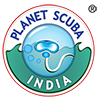Michael Behar
Source: Newsweek
November 21, 2010
When Hendrik Luesch invited me to Florida to go snorkeling, I didn’t expect to be wading through brackish muck in the Indian River Lagoon, a 156-mile-long estuary. I’m traveling aboard a 21-foot fishing boat with Luesch, a 40-year-old associate professor of medicinal chemistry at the University of Florida in Gainesville. The visibility sucks, like swimming through a vat of kombucha. Luesch drags his fingers through the water, gathering a wad of flotsam. He raises the specimen into the sunlight to get a better look at the slime, known as cyanobacteria.
Cyanobacteria live in every ocean and on every continent in both salt and fresh water. One species causes a rash known as swimmer’s itch; another blooms in lakes and reservoirs, expelling a neurotoxin that can be fatal to humans. “They produce this huge diversity of compounds that have never been identified,” says Luesch, who’s been studying them since 1997. Luesch has investigated cyanobacteria from around the world—Hawaii, Florida, Guam, Palau—and last year he made a startling discovery: a family of cyanobacteria called Symploca emits a toxin that attacks tumors. Luesch sprinkled Symploca extract on cultures of colon, bone, and breast-cancer cells, and they withered within hours, as though they’d been doused with Roundup; he did the same with healthy cells, and they survived virtually unscathed. Luesch christened the new compound “largazole” (the first batch came from algae near Key Largo), and has recently completed animal testing: in mice, largazole slowed the growth of cancerous colorectal tumors. He hopes to have an FDA-approved treatment on the market in about 10 years—the typical timeline to develop a new drug.
